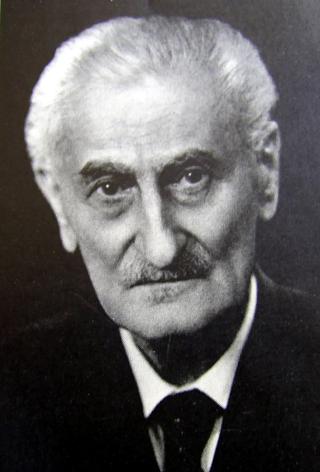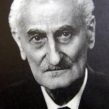
The Central Powers’ Policies Toward the North Caucasus, 1914–1917 (Part One)
Publication: Eurasia Daily Monitor Volume: 10 Issue: 5
By:

The First World War, which resulted in independence for some non-Russian peoples of the former Romanov Empire, also awakened a striving for sovereignty among the peoples of the Caucasus, which had gone dormant after the 1905 revolution.
The Caucasian peoples’ potential to the Central Powers’ war effort started to become obvious in December 1914, soon after the Ottoman Empire entered the war on the side of the Axis. More than a million Caucasians, victims of Tsarist Russia’s colonial policy who were forcibly expelled from their historical homelands only a few decades earlier, had settled on Turkish soil. Therefore, conscious that the national question was a kind of “Achilles’ heel” for the Romanov Empire, the Central Powers at the outset of war supported the independence movements of the non-Russian peoples of the multi-ethnic Russian state.
Even as early as August 1914, before the Ottoman Empire’s official entry into the war, the Turkish Marshall and Senator Fuad Pasha—of Circassian origin—had taken the initiative to organize an uprising of the Circassians in the Russian-held North Caucasus. Meanwhile Bekir Sami Bey, another prominent North Caucasian activist who was born in Ossetia to the famous General Musa Kunduh Pasha and held important government and diplomatic posts in Turkey, floated the idea of forming a Circassian Legion to take part in military operations against Russian troops on the Caucasian front (W. Bihl, Die Kaukasus-Politik der Mittelmächte, Vol. I, Ihre Basis in der Orient-Politik und ihre Aktionen 1914-1917, Wien-Köln-Graz, 1975, p. 62).
Immediately after the outbreak of World War I, similar steps were taken by representatives of the Georgian national liberation movement in Europe. In the summer of 1914, a Committee for the Liberation of Georgia was formed by Georgian emigrants living in Switzerland and Germany, most of whom had been also forced to leave their homeland due to the suppression of the 1905–1907 Revolution.
On September 17, 1914, the leaders of the Committee, Princes George Machabeli and Michael Tsereteli, prepared for Günther von Wesendonk, in charge of Middle Eastern Affairs at the German Empire’s Foreign Ministry, a Memorandum outlining their vision for the future of German-Georgian cooperation (W. Bihl, Die Kaukasus-Politik der Mittelmächte, Vol. I, pp. 63–64).
As this document shows, the authors, aware that the liberation of Georgia was not possible without the liberation of the whole Caucasus, focused on the necessity of coordinated action and a joint struggle of the peoples of the Caucasus for their independence:
“The Georgian people remained loyal to its ideals. Well organized politically, they are only waiting for the right time to take up arms, if they can only hope for some help from the outside. This time of world war seems to us the best of occasions to get it,” the document says.
The Memorandum continues, “The Muslim tribes of the Caucasus, who have set up a pan-Islamic club in Turkey thanks to their agents, are only waiting for the call to break away from the hated Russia. Therefore, an uprising of the whole Caucasus can be counted upon as a sure thing. However, the implementation of these ideas as well as the realization of those aims depends only on the furnishing of weapons, equipment, and the necessary means from abroad.”
At the end of the Memorandum, the authors provided their opinions on the specific prospects of future cooperation, as well as the goals pursued by the committee, concluding in favor of the creation of a neutral, independent Caucasian state:
As a result of an uprising in the Caucasus:
1) An army corps dispatched there will be diverted from the theater of war.
2) It will be impossible to carry out further mobilization.
3) It will provide a good example to the other oppressed peoples in Russia, who should not miss an opportunity to free themselves from the Russian yoke. Also, do not forget that the Russian revolutionary element, which has not been destroyed by the heavy repressive measures and continues to fester in large swathes of the public, will be enough of a spark to ignite a revolutionary flame.
All of this will make it impossible for Russia to continue the war—as was the case during the Russian-Japanese war. The Russian Government will be forced to sign an early peace treaty with Germany and Austria-Hungary in order to avoid a further decline of its power.
If all of this was achieved, Germany and Austria-Hungary will certainly need to raise, as one of the conditions of the peace treaty, the issue of the neutralization of the Caucasus, which corresponds not only to the interests of the peoples of the Caucasus and its neighboring countries, but also to their own.
The proclamation of a neutral Caucasus will do away forever with further insatiable adventurist plans of conquest by Russia in the Middle East. Together with this, the neutralization of the Caucasus:
1) Eliminates a dangerous neighbor for Turkey.
2) Releases Persia from the tutelage that Russia has imposed upon it.
3) Creates a reliable guarantee for a lasting peace in the Middle East.
4) Opens a wide field for trade and industrial relations with Europe, particularly for Germany, whose influence can be steadily expanded throughout the Caucasus and Central Asia.
5) The Caucasian peoples will remain eternally grateful and indebted to those who gave them support in the issue of their release from Russian domination (Haus-, Hof- und Staatsarchiv, Politisches Archiv (HHStA, PA), Wien, Republik Österreich, I 947 Krieg 21 k Türkei: Georgisch-grusinischer Aufstand im Kaukasus 1914–18, Fol. 46–49).
In fact, the Memorandum was a program for action, equally acceptable to all who supported the independence of the Caucasus and, above all, for the Mountaineers living in the Ottoman Empire.
As a cover, before its entry into World War I, the Ottoman government permitted the activities of the so-called “Turkish medical mission,” which was essentially a clandestine organization bringing together the Caucasian activists seeking independence for the Caucasus. After Turkey joined the war as a belligerent, this mission was officially transformed into a Caucasian Committee, consisting of representatives from the North Caucasus, Azerbaijan and Georgia.
The President of this Committee was the aforementioned Fuad Pasha. Its members consisted of the Circassian Aziz Meker, professor at the Agricultural Academy of Constantinople; Dagestani Isa Kotseki Pasha, general and Medical Inspector in the Ottoman army; the Georgian Prince George Machabeli, at the same time chairman of the Committee for the Liberation of Georgia created in Berlin in 1914 and then also active in Turkey; the cavalry lieutenant Kamil Tavdgiridze, the representative of the Georgian Muslims residing in Turkey; as well as the Azerbaijani Selim Bey Bebutov (G. Jäschke, Der Turanismus der Jungtürken, Zur osmanischen Aussenpolitik im Weltkriege, In: Die Welt des Islams, 1941, Bd. 23, H. ½, p. 17; W. Bihl, Die Kaukasus-Politik der Mittelmächte, Vol. I, Ihre Basis in der Orient-Politik und ihre Aktionen, 1914–1917, pp. 61–62, 239; Cf. Sh. Mufti, Heroes and Emperors in Circassian History, Lebanon, 1972, pp. 284–285).
At the close of 1914, in the Turkish region of Trabzon, the Central Powers began recruiting a Georgian Legion composed not only of local Muslim Georgians but also of Mountaineers of the North Caucasus who lived in Turkey. Assigned to the 8th Infantry Regiment under the command of German Lieutenant Colonel Stange Bey, they took part in the Ottoman army’s first winter offensive on the Caucasian front, distinguishing themselves at the taking of Ardahan (present-day eastern Turkey) on December 25, 1914. However, as a result of the Turkish troops’ later defeat in the Sarikamis military operation, the Caucasian volunteers had to leave the captured position no later than January 3, 1915, and to fight their way with heavy losses back westward toward Artvin (H. C. Armstrong, Unending Battle, New York and London, 1933, pp. 235–240; F. Guse. Die Kaukasusfront im Weltkrieg bis zum Frieden von Brest, Leipzig, 1940, pp. 38, 48–49; W. E. D. Allen, P. Muratoff, Caucasian Battlefields: A History of the Wars on the Turco-Caucasian Border, 1828-1921, Cambridge, 1953, pp. 254, 274–275, 280–281; W. Bihl, Die Kaukasus-Politik der Mittelmächte. Vol. I, Ihre Basis in der Orient-Politik und ihre Aktionen 1914-1917, p. 74).
At the same time, members of the Caucasian Committee engaged in forceful diplomacy, visiting in late 1915 and early 1916 the capitals of the German and Austro-Hungarian Empires. During those visits, the chairman of the Committee, Fuad Pasha, handed over to the German and Austrian ministries of foreign affairs a new memorandum (W. Bihl, Die Kaukasus-Politik der Mittelmächte. Vol. I, Ihre Basis in der Orient-Politik und ihre Aktionen 1914-1917, p. 64, 128.).
After enumerating the objective reasons why the Caucasians did not want and could no longer remain under the yoke of the Russian Empire, as well as asking Berlin and Vienna to support the Committee’s activities, the authors of the document stressed that the ultimate goal of their struggle for the liberation of the Caucasus was: “To create a Confederation of States, in which each member having achieved and maintaining full administrative autonomy, will have to provide, in accordance with its means and capabilities, the necessary troops and finance to protect the common interests and security of the whole State” (HHStA, PA, I 947 Krieg 21 k Türkei: Georgisch-grusinischer Aufstand im Kaukasus 1914–18, Fol. 89).
For the first time a plan had been set out to create a unified Caucasian State with a single military, customs and fiscal union.




